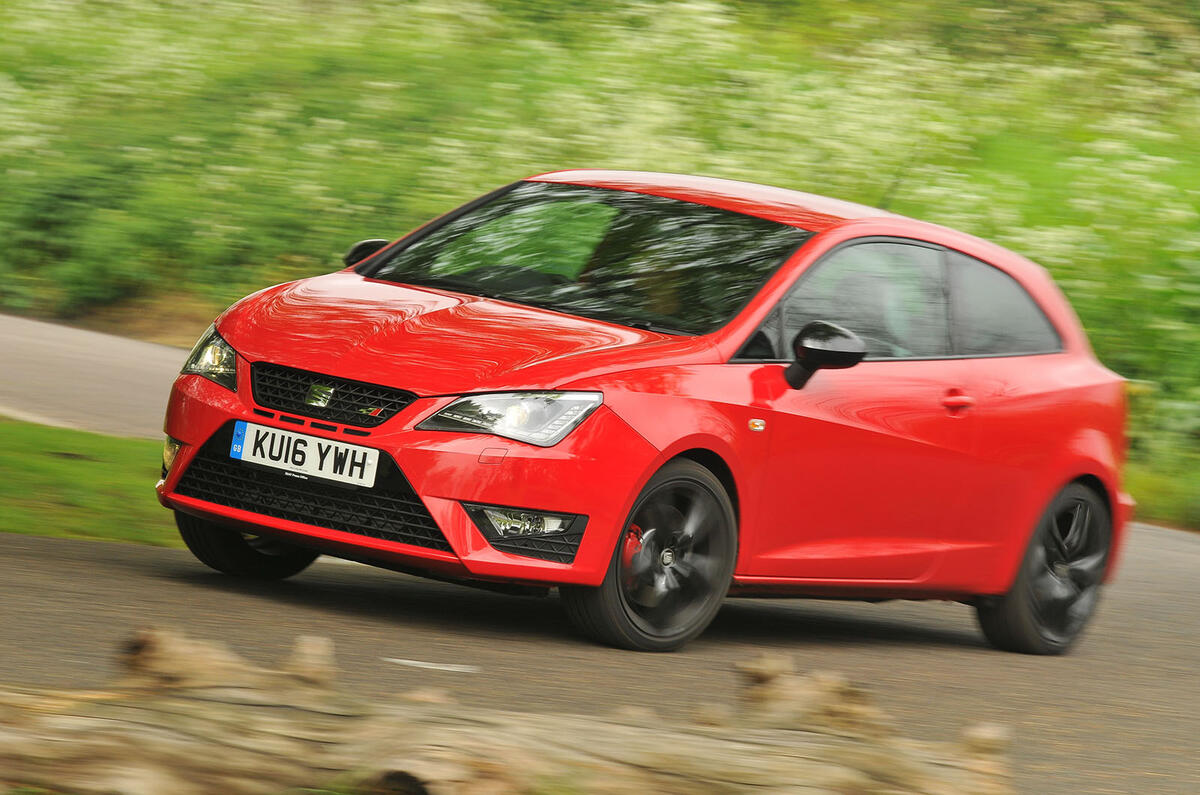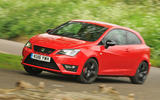Our Seat Ibiza Cupra is a great example of turbocharging done properly. It’s potent, responsive and, if allowed to, offers respectable economy.
The engine’s responsiveness comes in part because all of its 236lb ft arrives at just 1450rpm, and the potency is helped by the fact that maximum power doesn’t arrive until 4300rpm. It means you can work with a wide window of performance, which is best felt when accelerating flat out in second or third gear. You can make really rapid progress once you learn to keep the engine on song.
I’ve decided that the car definitely feels faster when running on high-octane fuel. The Cupra can run on RON95, but with super-unleaded I feel the engine offers more grunt for longer, plus it’s ever so slightly more responsive. Anyway, I’ve always firmly believed that if you’ve parted with more cash to buy a hot model, you shouldn’t scrimp on cheap supermarket fuel.
Talking of fuel, the Ibiza’s economy can dip into the teens when you’re really on it, but minutes later it will settle on the motorway at 70mph and easily surpass 40mpg — which trumps the real-world economy of a Ford Fiesta ST by a good 4-5mpg. Thanks to the six-speed gearbox, the engine is near silent at this pace, although those 215-section tyres produce a lot of road noise.
I’ve started to think of the Cupra less as a red-hot hatch with its eyes set on track days and more as a really usable daily driver that packs enough of a punch to get your pulse flowing when you open it up. A sort of mini Volkswagen Golf GTI, if you will — which makes sense, really, considering the Ibiza Cupra is a sibling to the Polo GTI.
But the Cupra is better than the Polo because that car costs from £19,125 but features a less sporty set-up without standard-fit adjustable dampers. To my eyes, the Seat is the better looker, too.
Like I said last time, the Cupra’s limit handling isn’t as exciting as that of some rivals, but it does do a heck of a lot of other things very well.
Apple CarPlay is a big hit
Ask any one of my friends what their favourite thing about the Ibiza Cupra Black is and I’d bet most would say it’s Apple CarPlay.
They revel in the ability to access a smartphone’s functions through the touchscreen. They love the sound system, too, and in a world where technology is often more important than performance, I suspect these are big wins for our Seat.
Read our previous reports:










Join the debate
Add your comment
Interested that you prefer the Ibiza over the Polo GTI...
You say the Polo has a less sporty ride. Does that mean the Ibiza is generally firmer? If so, that could soon grow tiresome if used on the daily commute, rather than the track. Surprised that they are so close in price, too. I suspect the monthlies on the Ibiza are higher due to poorer expected residuals...
Still, nice looking car that Ibiza... Just glad I went for the Polo GTI.
mpg
Imagination working overtime.
Agreed, there is a difference between higher and lower octane rated fuels.
What sort of nonsense is this? The car performs better with high-octane fuel - agreed. But why mention cheap supermarket fuel? What's the difference between 98RON from a branded Oil company and 98Ron from a supermarket?
Forecourt fuel is made up with two components - the fuel itself and additives. The fuel is common, only the additives differ, and they differ for each supermarket and oil company. Sainsburys fuel differs from Tesco just like Esso differs from BP. Is the author seriously suggesting to us that he can tell the difference if the car has been fueled courtesy of Esso or BP or Shell or Tesco or Sainsburys
Autocar's own Best Buy tests regularly show us that the most expensive product is no better than a cheaper one. Moreover, some tests discover the opposite. So perhaps Autocar can run a new article. Why not fill up Sam's car with the same high-octane fuels from different sources and ask him to rate them based on his ability to tell the difference?
High octane?